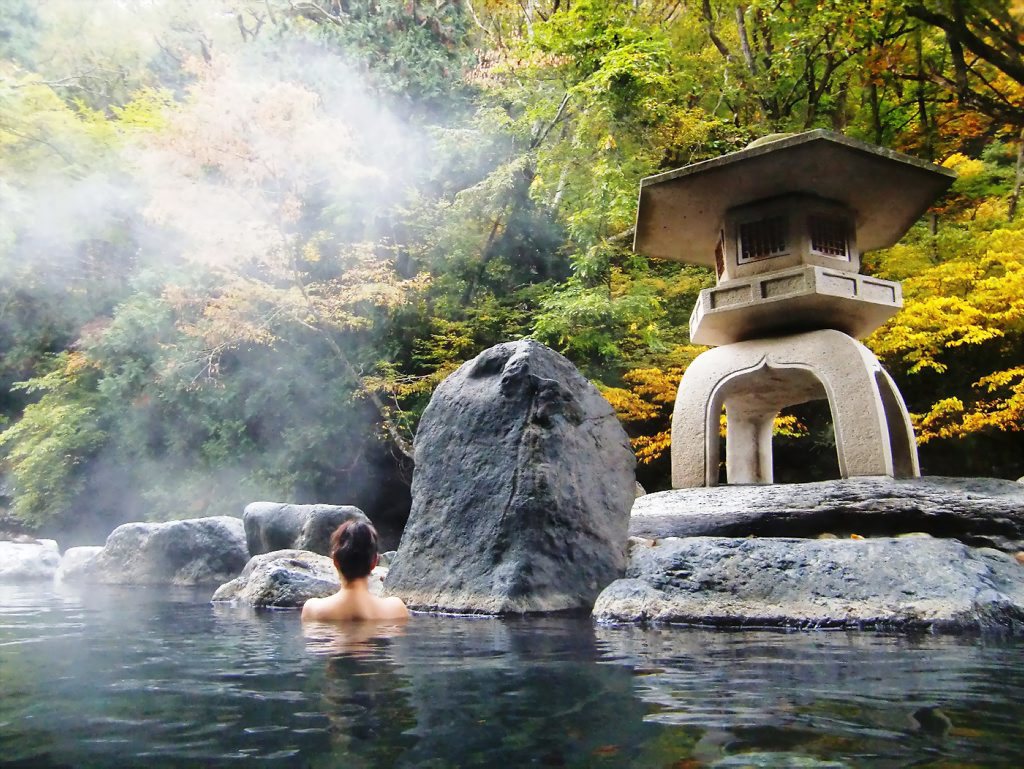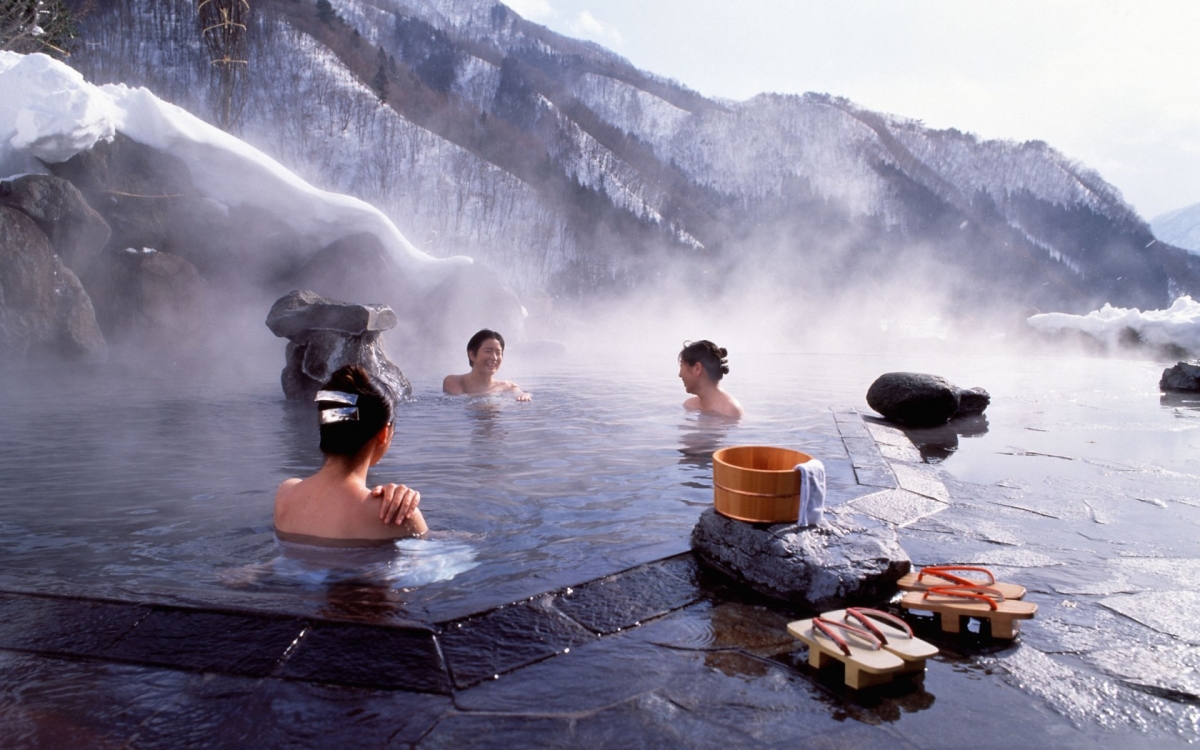In Japan, where modernity meets centuries-old tradition, there is a unique form of recreation that combines care for the body with inner tranquility. Onsen, or bathing in natural hot springs, is not only part of the Japanese cultural landscape, but also a philosophy of life based on harmony with nature.
What is behind the word “onsen”?
Wordonsen (Japanese: 温泉) literally means “hot water” and refers to naturally geothermally heated springs that are rich in minerals – sulfur, sodium, magnesium or iron. Their temperature must be at least 25°C, and the waters flow from a depth of more than one and a half kilometers.

However, these are not ordinary bathing facilities. Onsen are a cultural asset. Traditional. They have health-promoting effects. For centuries, the Japanese have used them to treat muscle pain, improve circulation, cleanse the skin and relieve stress. That’s why they are still a form of physical and mental health care today.
A ritual that calms
A stay in an onsen is more than a bath. It’s a ritual that begins with a thorough cleansing of the body in the shower – mandatory and treated with the utmost care. Only after that can you enter the pools of hot water.
Onsens are most often divided into male and female sections. Bathing, on the other hand, is done in the nude. In Japanese terms, contact with water should be pure, literal and respectful – without unnecessary additions, noise or haste. Silence, slow movements, focusing on one’s own breathing – these are natural elements of this form of relaxation.
Uncovered and hidden: rotenburo
A special kind of onsen are rotenburo – outdoor bathing places, often located in the mountains, amidst snowy landscapes, by a river or overlooking a bamboo forest. Their popularity is not due to aesthetics, but to the extraordinary sense of immersion in nature. Bathing in hot water while snow falls or in the silence of night cicadas is an experience. It is hard to compare with any spa in the world.
Traditional ryokan and bath at dawn
Onsen are often associated with ryokans – traditional Japanese inns. Then participants spend the night on tatami mats. They consume local foodskaiseki. The day begins and ends in a hot spring. Often it is the morning bath at dawn, when the steam rises above the surface of the water, that becomes the highlight of the entire stay.
Japan – the kingdom of springs
Japan has about 25,000 geothermal springs. Meanwhile, more than 3,000 of them are places officially recognized as onsen with full infrastructure. These range from modest bathhouses in mountain villages to luxurious spas in Kyoto, Beppu or Hakone.
Some of them – like Ginzan Onsen and Kusatsu Onsen – are shrouded in legends. They have centuries of history. Others remain hidden from the crowds, accessible only to those who are willing to give up comfort for authenticity.
Luxury through silence and simplicity
In a world where luxury often means excess, onsen offers the opposite: silence, minimalism and a deep sense of presence. No music. No gadgets. No phones. Just hot water, time and nature.
It’s form of relaxation, which needs no external additives to be full-flavored. And perhaps that is why, although seemingly simple, it is so deeply appreciated. Both by the Japanese and by those who are looking for more than just a vacation.





